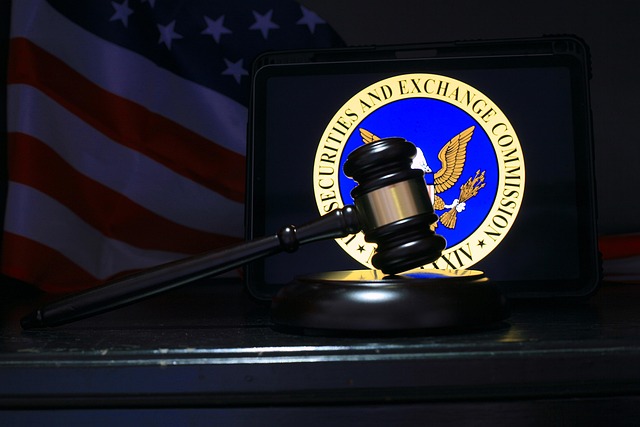Mail wire fraud, a growing digital threat involving deception through electronic communication for financial gain, carries severe legal consequences including fines and imprisonment. Trademark infringement, another form of white-collar crime, involves unauthorized use leading to cessation orders, damages, and even criminal penalties. Both require robust security measures, digital forensics expertise, and community engagement to prevent and mitigate risks. Awareness, documentation, and preventative actions are key to successful defenses against these legal consequences.
Mail wire fraud, a sophisticated form of cybercrime, involves manipulating electronic communications to defraud individuals and businesses. This article delves into the intricate world of mail wire fraud, exploring its various schemes and legal implications. We’ll discuss trademark infringement as a key aspect, highlighting its severe consequences under current laws. Learn how to identify, report, and prevent these scams, focusing on practical steps for safeguarding your business from potential legal repercussions stemming from trademark infringement.
- Understanding Mail Wire Fraud: Definition and Common Schemes
- Legal Framework: Trademark Infringement and Its Implications
- Evidence and Reporting: Uncovering and Documenting Fraud
- Penalties and Prevention: Protecting Yourself and Your Business
Understanding Mail Wire Fraud: Definition and Common Schemes

Mail Wire Fraud is a sophisticated criminal activity that involves the use of electronic communication to deceive individuals or organizations into transferring money or sensitive information. This form of fraud has become increasingly prevalent with the rise of digital transactions, taking advantage of people’s trust in secure online systems. Typically, fraudsters impersonate legitimate entities, such as banks or government agencies, through emails, texts, or even voice calls, creating a sense of urgency to prompt immediate action. Common schemes include asking for personal and financial details under the guise of updating records or verifying accounts, leading to identity theft and financial loss.
While these fraudulent activities can have severe legal consequences, including substantial fines and imprisonment, understanding how they operate is key to developing winning challenging defense verdicts in cases involving white-collar crime. A complete dismissal of all charges is not unlikely for those who can prove their innocence or demonstrate that they were victims of manipulation rather than active participants in the fraud. Understanding the specific schemes and staying vigilant is crucial in mitigating potential Legal Consequences of Trademark Infringement, which can arise from such fraudulent interactions, further emphasizing the importance of digital literacy and security awareness.
Legal Framework: Trademark Infringement and Its Implications

The legal framework surrounding trademark infringement is a robust mechanism designed to protect brand identities and intellectual property rights. When an individual or entity uses a trademark without authorization, it constitutes a violation that can have severe consequences. Trademark laws vary across jurisdictions but share common goals of preserving fair competition and consumer protection. Infringement can lead to legal actions initiated by the trademark owner, resulting in orders for cessation, damages, and in some cases, criminal penalties.
The implications extend beyond financial losses for offenders. An unprecedented track record of successful trademark infringement cases has been achieved, with outcomes that significantly impact repeat offenders. This is especially true for those engaging in large-scale or willful infringements. The legal system plays a pivotal role in ensuring brand integrity and upholding the rights of corporate and individual clients alike, making it a powerful tool against unauthorized use.
Evidence and Reporting: Uncovering and Documenting Fraud

Uncovering mail wire fraud requires a meticulous process of evidence collection and documentation. Individuals or entities suspected of engaging in such fraudulent activities leave digital footprints that can be analyzed. Experts in digital forensics play a crucial role in preserving and examining these traces, which may include electronic communications, financial records, and metadata. By sifting through this data, investigators can identify patterns, trace transactions, and gather irrefutable proof of criminal intent.
Reporting fraudulent activities is an essential step in combating mail wire fraud. Victims or individuals with knowledge of such schemes are encouraged to come forward and provide detailed information to law enforcement agencies. This includes documenting all interactions, retaining relevant emails, text messages, and records related to financial transactions. The legal consequences of trademark infringement can be severe, and a comprehensive documentation process is vital for building strong cases that may lead to successful white-collar defense strategies, potentially resulting in complete dismissal of all charges.
Penalties and Prevention: Protecting Yourself and Your Business

The legal consequences of mail wire fraud can be severe, with penalties including substantial fines and imprisonment. Businesses and individuals found guilty of such offenses risk damage to their reputation and long-term financial instability. To protect yourself and your business, it’s crucial to implement robust security measures, like encryption for data transmission and regular employee training on fraud awareness. Stay vigilant against suspicious emails and never share sensitive information without verifying the recipient’s identity.
Preventative actions extend beyond individual protections; they also involve engaging with broader communities, including philanthropic and political entities across the country. By raising awareness and sharing best practices, these groups can collectively fight against mail wire fraud, ensuring a safer digital landscape for all. Regularly updating security software and staying informed about emerging scams are additional layers of defense that can significantly reduce the risk of becoming a victim.
Mail wire fraud is a complex issue with significant legal implications, particularly regarding trademark infringement. Understanding these schemes, from their common strategies to reporting and prevention, is key to mitigating risks. By recognizing the legal consequences of trademark infringement, businesses can protect themselves and their intellectual property. Proactive measures and staying informed about mail wire fraud are essential steps towards a safer digital landscape.






